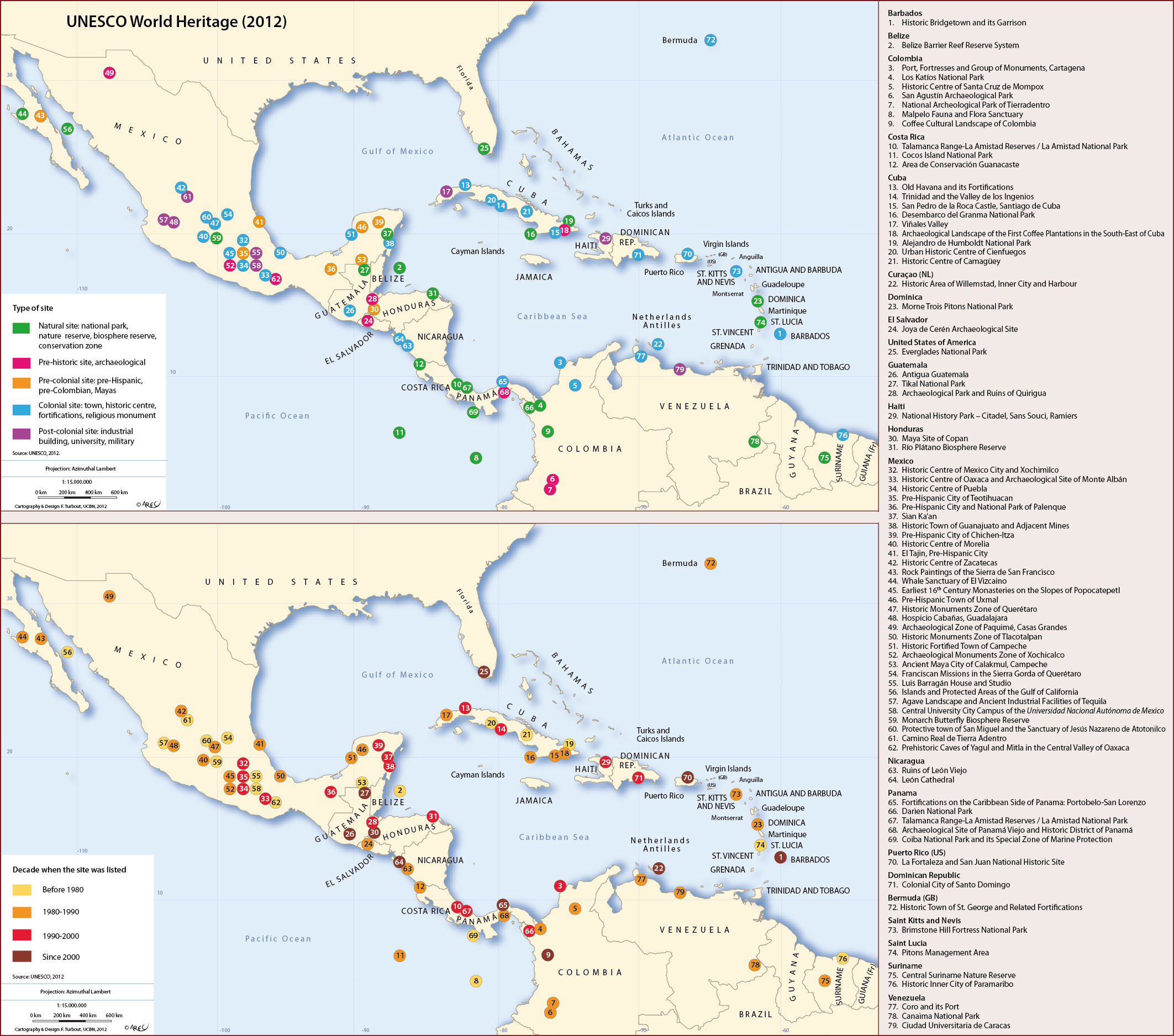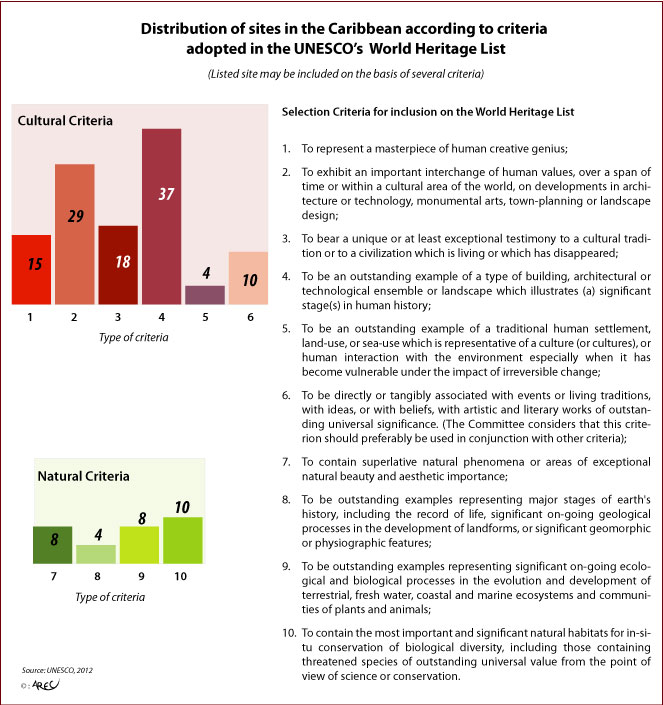
- Foundation of the Universities
- Gabriel García Márquez y el Caribe ES FR
- Pôles universitaires (années 1990) FR
- UNESCO heritage sites (2012)
The Caribbean basin, crucible of civilisations, with its nature reserve of exceptional fauna and flora, and over-abundance of historical, architectural and landscape riches.
The designation as UNESCO sites of World Heritage of 79 of its most beautiful sites beers impressive testimony of this richness. An exhaustive inventory reveals a great variety, stretching from pre-history to the post-colonial. 56 cultural sites are thus listed and protected within the region.
The different civilisations and peoples who settled, transformed, and exploited these localities (Mayas, Aztecs, Arawaks, Tainos, and more recently different colonising settlers) equally left their imprint on both town and countryside.
The geological complexity laid down in the physical formation of the basin offers a variety of landscapes in which an extraordinary richness in terms of fauna and flora is found: rare tropical species, some adapted to their particular milieu, occasionally unique in the world, among the many examples.
The listed natural sites are numerous: 22 in total stretching from Florida with its Everglades National Park to the Central Suriname Nature Reserve, by way of Talamanca Range-La Amistad Reserves astride the frontier between Panama and Costa Rica.
The Greater Antilles are no less important with around 18 listed sites. Cuba is home to half of these with its balanced distribution of both natural and cultural sites, such as the Old Town of Havana, or the Historic Centre of Cienfuegos, and natural sites such as the karstic terraces of the Desembarco del Granma National Park. The Lesser Antilles boast 5 designated sites displaying traces of past riches in military architecture or historic urban centres, with two focusing more particularly on the management and conservation of tropical ecosystems (fauna, flora, volcanic legacies, hydrography, lacustrine as well as marine environments, and coral reefs.
Across the isthmus and the countries of South America bordering the Caribbean basin, Mexico stands out with its number of listed sites (31 out of 61 sites outside the Greater and Lesser Antilles). Many amongst them reflect the history of the country and its rich architectural heritage (more than half relating to pre-Hispanic towns or historic urban centres). The central part of the isthmus is particularly renowned for its important natural sites: now national parks and zones delimited to protect the biosphere exist in numbers side by side. The topography associated with active volcanism stands apart as a special zone dedicated to Caribbean fauna and flora.
Amongst the listed 79 sites in the Caribbean basin, six are deemed to be at risk amongst which 4 are natural sites:
-
- Everglades National Park (USA);
- Belize Barrier Reef Reserve System, home to several species at risk, such as the sea turtle, the manatee (sea cow), and the American crocodile;
- Los Katíos National Park (Columbia), home to more than 500 different species of vertebrate;
- Río Plátano Biosphere Reserve (Honduras), the vestige of a humid, tropical forest, home to some 2 000 native people living a traditional ways of life;
- Fortifications on the Caribbean Side of Panama: Portobelo-San Lorenzo, part of the defence system built by the Spanish Crown to protect transatlantic trade (17th and 18th century military architecture);
- Coro and its Port (Venezuela), one of the very first colonial towns of earth construction inherited from a local architectural tradition, and displaying both Spanish and Dutch influences.
The inscription for each site listed as being “of exceptional universal value,” and as such part of the World Heritage of the planet is a pledge of protection and preservation. Out of 193 member states of the UN, 189 ratified the UNESCO World Heritage Convention. Each accordingly actively participates in the conservation and preservation of its UNIESCO listed heritage
top
|
  |















